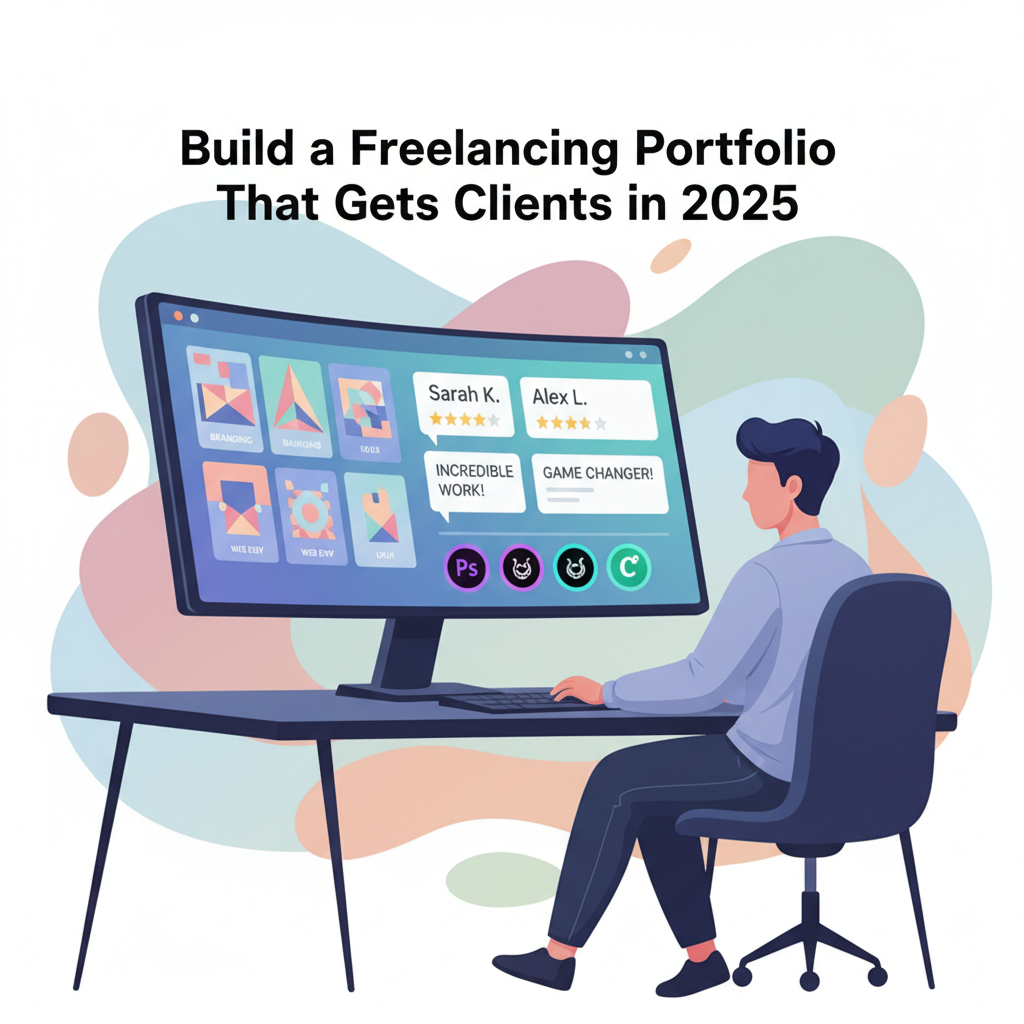In 2025, the freelancing world is more competitive than ever — and your portfolio is your passport to success. Whether you’re a writer, designer, developer, or marketer, clients judge your skills not just by your pitch but by what you can show. A strong portfolio proves your expertise, builds trust, and helps you stand out in a crowded market.
This blog explores how to create a portfolio that attracts high-paying clients and showcases your best work with confidence.
1. Why Your Portfolio Matters
Your portfolio is often your first impression. It’s a visual resume — demonstrating what you can deliver, not just what you claim. A well-built portfolio can:
- Convince clients of your professionalism.
- Help you command better rates.
- Open doors to long-term contracts or collaborations.
💡 Pro Tip: Clients often scan portfolios for less than a minute. Make every section count.
2. What to Include in a Freelancing Portfolio
To create an impactful portfolio, include:
- Introduction/About Section: A short story of who you are and what you specialize in.
- Highlighted Projects: Show at least 5–6 of your best works with descriptions, visuals, and results.
- Client Testimonials: Build social proof with feedback or star ratings.
- Skills & Tools: Mention software or technologies you’re proficient in.
- Contact Section: Make it easy for potential clients to reach out.
💡 Bonus Tip: Add a downloadable resume or a link to your LinkedIn profile.
3. Choosing the Right Platform
In 2025, freelancers have many options for portfolio hosting:
- Personal Website (WordPress, Wix, or Notion) – Best for a professional touch.
- Behance or Dribbble – Great for designers and creatives.
- GitHub or CodePen – Ideal for developers.
- Medium or Substack – Perfect for writers and content creators.
Keep the interface simple, mobile-friendly, and well-organized.
4. Show Results, Not Just Work
Clients love seeing impact. For each project, add measurable outcomes — like:
“Increased website traffic by 40% in 2 months.”
“Created designs that boosted brand engagement by 25%.”
These metrics make your portfolio more convincing and result-driven.
5. Keep Updating and Polishing
A portfolio isn’t a one-time effort. Update it regularly with your latest work, improved visuals, and new testimonials. The more active it looks, the more trust it builds.
💡 Pro Tip: Every 3–6 months, replace outdated work with better, more relevant samples.
Conclusion
Your freelancing portfolio is your brand identity — the foundation of your career growth. Make it visually appealing, easy to navigate, and focused on results. With consistency and creativity, your portfolio can turn visitors into loyal clients, helping you thrive in the global freelancing marketplace of 2025.




